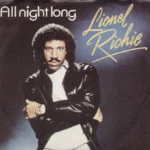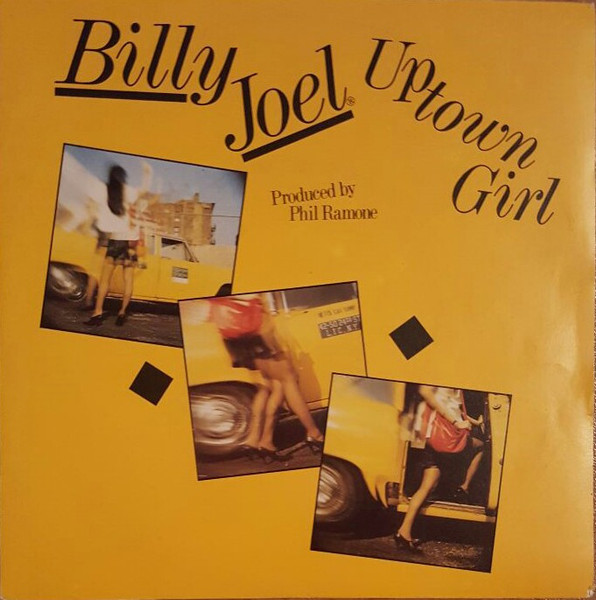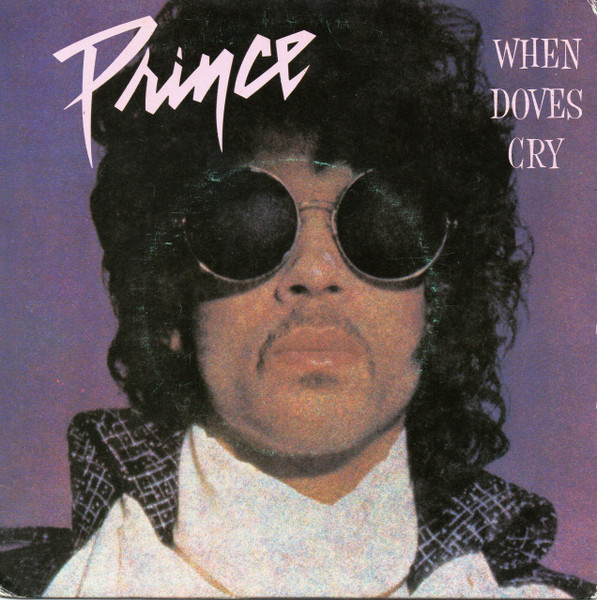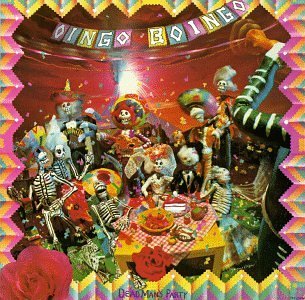 Few songs in pop music history achieve the rare alchemy of universal joy, cross-cultural resonance, and timeless appeal, but Lionel Richie’s “All Night Long (All Night)” does precisely that. Released in 1983 as part of his second solo album, Can’t Slow Down, the track transformed Richie from a former Commodores frontman into a global pop phenomenon. With its infectious rhythms, celebratory lyrics, and irresistible melody, “All Night Long” became more than just a hit single—it became a cultural touchstone, a song that transcends borders, languages, and generations. Decades after its release, it still commands dance floors, weddings, and celebratory moments, proving that the essence of joy captured by Richie is as potent today as it was during the vibrant early ’80s.
Few songs in pop music history achieve the rare alchemy of universal joy, cross-cultural resonance, and timeless appeal, but Lionel Richie’s “All Night Long (All Night)” does precisely that. Released in 1983 as part of his second solo album, Can’t Slow Down, the track transformed Richie from a former Commodores frontman into a global pop phenomenon. With its infectious rhythms, celebratory lyrics, and irresistible melody, “All Night Long” became more than just a hit single—it became a cultural touchstone, a song that transcends borders, languages, and generations. Decades after its release, it still commands dance floors, weddings, and celebratory moments, proving that the essence of joy captured by Richie is as potent today as it was during the vibrant early ’80s.
The brilliance of “All Night Long” lies in its effortless fusion of pop, R&B, and world music influences, a combination that felt groundbreaking at the time and still sounds fresh today. Richie drew inspiration from Caribbean soca and calypso rhythms, incorporating the percussive elements and lilting syncopation that give the track its buoyant, sunny energy. From the very first note, the song conveys motion, celebration, and togetherness. Percussion drives the beat, while the keyboard and bass lines interlock to form a groove that is impossible not to move to. The production is immaculate yet organic, avoiding the overly synthesized sound of some contemporaneous ’80s pop, favoring warmth and human touch. This musical foundation sets the stage for Richie’s signature voice, which is as smooth and inviting as ever, carrying both energy and heart.
Lyrically, “All Night Long” is deceptively simple, yet its genius lies in the way it evokes a universal experience. The chorus—“Everybody sing, everybody dance, all night long”—is both an invitation and a promise. It doesn’t matter who you are, where you come from, or what language you speak: this song is about communal joy. The lyrics mix English with Caribbean-inflected phrases like “Jambo! Jambo! Yeah, mambo!” and “Vamos a bailar,” reflecting Richie’s vision of a global party. This multicultural approach was ahead of its time, anticipating a world increasingly attuned to cross-cultural musical collaboration. The song celebrates music and dance as universal languages, creating a shared experience that transcends personal and cultural boundaries.
When “All Night Long” was released, the global reception was instant and powerful. In the United States, it topped the Billboard Hot 100 for two weeks, while also dominating charts in the United Kingdom, Canada, Australia, and beyond. Its success was part of the broader explosion of Richie’s solo career, demonstrating his ability to craft hits that were both radio-friendly and deeply immersive. Unlike many pop songs that fade with their moment, “All Night Long” proved to be resilient, maintaining its status as a staple of parties, celebrations, and public gatherings for decades.
The song’s arrangement is a masterclass in balance and energy. Richie’s vocal delivery drives the melody with warmth and accessibility, while the backing vocals, provided by a talented ensemble, enhance the sense of community and shared joy. The percussion section, featuring a combination of drums, congas, and other hand-played instruments, adds layers of rhythmic complexity, giving the track a lively momentum without ever feeling chaotic. Horn accents punctuate the arrangement with flair, adding a touch of sophistication and excitement, while the piano and keyboards provide a harmonic richness that anchors the composition. Together, these elements create a track that feels celebratory yet polished, exuberant yet controlled.
Part of the song’s enduring appeal is its adaptability. While rooted in Caribbean-inspired rhythms, it has been embraced across genres and contexts. From pop radio to wedding dance floors, from sporting events to holiday parties, “All Night Long” functions as both a dance track and a social ritual. Its message is inclusive: it encourages participation, celebration, and joy without being prescriptive. In a way, it functions almost as a musical mantra, a reminder that music has the power to unify people across differences and lift spirits collectively.
Lionel Richie’s background and artistry are essential to understanding the song’s impact. Before embarking on his solo career, Richie was the lead singer and songwriter for the Commodores, one of Motown’s premier acts. With hits like “Easy” and “Three Times a Lady,” Richie had already demonstrated his gift for crafting soulful, romantic ballads. However, All Night Long revealed another side of his musical personality: the ability to produce high-energy, rhythmically complex, and culturally expansive tracks. The song was emblematic of Richie’s transition from band frontman to international solo superstar, highlighting his versatility and his keen sense of audience connection.
Moreover, the timing of its release amplified its resonance. The early 1980s were a period of global optimism and technological advancement, with music videos emerging as a key medium for artistic expression. The video for “All Night Long,” featuring Richie in a jubilant street party setting, reinforced the song’s themes of community, celebration, and multicultural exchange. Its imagery—dancers of diverse backgrounds, festive lights, and shared energy—translated the auditory joy of the song into a visual spectacle. This helped cement its status as not just a song but an emblem of 1980s pop culture.
The influence of “All Night Long” extends beyond its immediate commercial success. It has inspired countless artists across genres, from pop to R&B to world music, demonstrating the power of rhythmic fusion and global-minded composition. Its infectious groove, memorable hook, and celebratory energy have become a template for crafting cross-cultural hits, influencing generations of songwriters who seek to create music that feels both intimate and universal. Artists like Shakira, Ricky Martin, and Bruno Mars have drawn on similar principles, blending diverse musical influences into pop frameworks that prioritize rhythm, melody, and communal engagement.
“All Night Long” also benefits from its remarkable performative qualities. Lionel Richie’s live renditions have become legendary, transforming each concert into a collective celebration. Fans sing along from the first note, clap in rhythm, and dance together, creating an almost ritualistic experience. The song’s structure—with its repeated chorus and instrumental interludes—allows for improvisation and audience participation, further enhancing its status as a communal anthem. It is both a composed song and a living, breathing experience, evolving with each performance while retaining its essential identity.
The song’s lyrics, though straightforward, contribute significantly to its universality. By emphasizing themes of joy, music, and communal celebration, Richie tapped into experiences that are both personal and shared. Unlike many pop songs that focus narrowly on romantic relationships, All Night Long encompasses a broader spectrum of human connection. Its repeated exhortations—“everybody sing, everybody dance, all night long”—invite listeners to participate actively, creating a sense of belonging and collective euphoria. The song’s multicultural references reinforce this universality, suggesting that music transcends language, geography, and culture.
Critically, All Night Long was praised not just for its infectious energy but for its compositional sophistication. The fusion of pop, soul, R&B, and Caribbean influences required careful arrangement and keen musical insight. The song balances melodic accessibility with rhythmic complexity, creating a track that is engaging for casual listeners while rewarding deeper attention from music aficionados. Its layering of percussion, horns, keyboards, and vocals demonstrates Richie’s mastery of orchestration and production, highlighting why the song remains a high point in his catalog and in 1980s pop music as a whole.
Over time, the song has cemented itself as a cultural touchstone beyond the realm of music. Its use in films, commercials, and public events underscores its enduring relevance. In weddings, graduation parties, and celebratory gatherings, “All Night Long” functions as a musical shorthand for joy, unity, and release. Its adaptability to diverse contexts—whether a dance floor in New York, a street festival in Lagos, or a wedding in Rio de Janeiro—speaks to its global appeal. Few songs achieve this level of universality, but Richie’s composition manages to be both deeply specific in its groove and expansively inclusive in its spirit.
The song’s enduring legacy also owes much to Lionel Richie’s artistry and persona. Richie’s warmth, charisma, and technical skill elevate the track from mere pop entertainment to an enduring work of musical joy. His voice carries both soul and exuberance, perfectly matching the celebratory themes of the lyrics. The combination of his vocal delivery, the track’s complex rhythmic foundation, and the song’s infectious melody creates a sense of euphoria that is difficult to resist. It is a song designed to elevate, to lift spirits, and to unite people through the sheer force of its energy.
Even decades later, All Night Long continues to inspire new listeners and performers. Cover versions, dance routines, and viral online performances attest to its ongoing vitality. Unlike songs that fade into nostalgia, it remains immediate, relevant, and emotionally resonant. Its themes of communal joy, celebration, and music’s power to connect transcend generational divides, making it as vital today as it was at its release.
Ultimately, All Night Long by Lionel Richie is more than a song—it is a celebration of life itself. Its infectious rhythms, celebratory lyrics, and vibrant production have made it an enduring anthem of joy, a track that transcends cultural and generational boundaries. Richie’s ability to blend musical sophistication with universal themes of happiness and togetherness ensures that the song will remain a staple of human celebration for decades to come. It is a reminder of music’s power to unite, uplift, and transform, proving that sometimes, all it takes is a single song to make the world dance “all night long.”


